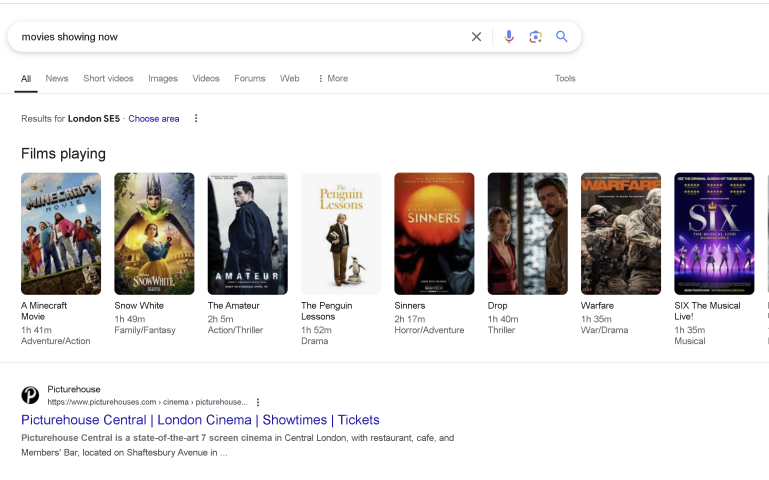Brainstorming Media
First, I researched different forms of media, looking at different media studies curricula and visual study aids (via Thoughtful Learning)


- Print media: Print media refers to printed materials, such as books and magazines, that contain words and images.
- Broadcast media: Broadcast media includes information transmitted through one of several mass communication channels, such as television and radio.
- Internet media: Internet media is content distributed online and can include emails and online publications.
- Out-of-home media: Out-of-home media, or OOH, is media that reaches people when they are outside of their homes, like billboards.
- Print media – information which has been printed, such as newspapers and magazines
- Broadcast media – content distributed through television or radio
- Online media – information presented on websites, social media and apps.
I deduced it wasn’t necessary to cover every type, as long as one or two examples from each broad category were represented. I concluded the following as the broader categories from my research, and picked one to a few subcategories ->
| Media Type | Chosen Subcategory |
|---|---|
| Print Media | Newspaper |
| Broadcast Media | TV |
| Online/Internet Media | Streaming, Social Media, Websites |
| Out of Home Media | Advertising (e.g., Billboards) |
| Audiovisual Media | Cinema |
Then I had to find sources from which to scrape these; after some research, I decided on the following, mainly due to ease and avoiding those sites which are more likely to block scraping. I also needed to make sure there were frequent changes in the data I scraped (the audience should be able to tell it changes every time the film plays), and experimented with a few sites (Meta for Ads, Indeed for Jobs, Google for Films as seen in the data scraping sections) until I landed on this.
| Media Type | Chosen Subcategory | Scraping Source |
|---|---|---|
| Print Media | Newspaper | BBC News site |
| Broadcast Media | TV | ? |
| Online Media | Streaming Platforms | Spotify |
| Social Media | Twitter Trending | |
| Websites | ||
| Out of Home Media | Advertising | ? |
| Audiovisual Media | Cinema | Google Search Engine Result |
Since media interfaces often overlap (e.g., news or programs can appear in both print and broadcast media, ads can exist across social and marketing media, and platforms like YouTube can be categorised as a website, streaming, or social media), I had to brainstorm how to connect these elements. This helped me determine precisely what to include, ensuring a broad range of media and communication types, as well as their respective interfaces, were reflected, so that Point 1 from the theme I outlined was effectively communicated.
| Media Type | Chosen Subcategory | Scraping Source | Media Interface |
|---|---|---|---|
| Print Media | Newspaper | BBC News | Newspaper |
| Broadcast Media | TV | TV Programming Schedule | TV Screen |
| Online Media | Streaming Platforms | Spotify | Radio/Speaker |
| Social Media | Twitter Trending | Mobile Phone | |
| Websites | Job Site | Laptop/PC | |
| Out of Home Media | Advertising | Reddit Ads | Billboard |
| Audiovisual Media | Cinema | Movie Listings Cineworld | Marquee |
The idea is to scrape data from various forms of mass communication and media, as explained in the research section, and to visualize this data through the physical and digital mediums by which it is typically consumed in our every day lives—such as phones, laptops, print, and advertisements.
Here, data from Twitter (representing social media) on trending topics is visualised on a mobile phone, a digital media interface.


Here, data from the BBC News Homepage (representing website/digital media) visualised on a newspaper (representing print media).


Meta advertisements (representing digital marketing media) visualised on public tube adverts (representing advertising/transit media).


Data from jobseeker sites (representing owned/website media) visualised on a laptop, a digital media interface/mode of mass communication. If not this, then YouTube, which is a website as well as a social media as well as a streaming platform.


TV programming schedules (representing broadcast media) visualised on TV sets, a digital media interface/mode of mass communication.


Data from a Google search for movies currently showing in cinemas (representing visual media)


Data from Spotify (representing streaming media), with a Bluetooth Radio.


As long as the pervasiveness of the media we consume was captured, that was enough. The live data stream, its constant updates, and its visualisation would address the ‘ever-changing’ aspect, while the characterisation, which I would explore further after research, would cover Point 2.
Data Visualisation
To visually represent this, the live data will be displayed through animation techniques such as scrolling and glitching. These methods are intended to reflect the psychological effects of various media sources on viewers, demonstrating how contemporary media consumption subtly shapes perceptions, behaviours, and inner lives. Academic references on media will broadly support this visual narrative, explaining the impact of media on the viewer’s psyche and why each animation technique is used to represent specific effects. I’ve also compiled a rough table with data on how each type of media can be visualised.
The main thing to ensure here was that it was ->
Reflective of Theme
The data is ephemeral—transient and readily discarded. While the character may not actively engage with its content, the data nonetheless exerts a subtle influence. This influence may be reflected in the behaviour of the data itself: it may scroll, fade, glitch, or follow the character, visually embodying its impermanence yet subconscious effects, as well as the character’s emotional detachment. These are the readings used to back up the rationale behind the visualisation.
Vecsei, M.M.C.P., 2024. THE MASS MEDIA AND ITS MANIFOLD SOCIAL ROLES. THE US MEDIA–A CASE STUDY. Scientific Bulletin-Nicolae Balcescu Land Forces Academy, 29(1), pp.11-16.
Taylor, T., 2024. You’ve Already Been Programmed: Here’s How the Media Uses Your Mind Against You. Medium.
Ubani, Udo & Ihesiulor, Chikezie & Franklin, Osuchukwu. (2021). The Influence Of The Media On The Mind.
Carr, N. (2010). The Shallows: What the Internet Is Doing to Our Brains. New York: W.W. Norton & Company.
| Media/Data & Scraping Source | Visualisation |
| Social Media (Twitter) | Leaking from MC’s phone into shadow as a constant, glitchy vertical scroll. |
| Print Media (BBC Newspage) | Leaking from a newspaper into MC’s shadow, with new batches of headlines appearing one after another. |
| Marketing Media (Reddit Ads) | Melting off tube ads and following MC, with the fonts pulsating rhythmically. |
| Web Media (Job Search Sites) | Melting off PC into MC. |
| Broadcast Media (TV Programme) | On TV screens in a shop, blinking steadily but not in tune with one another, and disappearing by the time MC is off the screen, implied it blinked into her shadow. |
| Visual Media (Cinema Site) | On a cinema marquee, titles lighting up one by one, then dropping from the board into MC’s shadow. |
| Streaming Media (Spotify) | Floating gently from the radio into MC’s shadow. |
These ideas were then slightly adapted and further refined as the project progressed. As I began experimenting with data scraping and visualisation, and was confronted with the constraints of the project’s time frame, I had to make practical adjustments to the original concept.
| Media/Data & Scraping Source | Visualisation |
| Social Media (Mastodon) | Rising from phone to follow MC as a vertical scroll. |
| Print Media (BBC Newspage) | New batches of headlines appearing one after another, the first batch following MC. |
| Marketing Media (Reddit Ads) | Scrolling off tube ads to follow MC. |
| Web Media (RemoteOk) | Melting off PC into MC, in a constant influx of new batches. |
| Broadcast Media (Freeview) | On TV screens in a shop, switching channels and batch schedules, until the second batch scrolls down and is implied to follow MC. |
| Visual Media (Cineworld) | On a cinema marquee, titles lighting up one by one, then dropping a batch from the board into MC’s shadow. |
| Streaming Media (Spotify Charts Site) | Floating gently, horizontally from the radio into MC’s shadow. |
| Media Type | Chosen Subcategory | Scraping Sources Tried | Final Scraping Source | Media Interface |
|---|---|---|---|---|
| Print Media | Newspaper | bbc.co.uk – BBC news homepage | bbc.co.uk – BBC news homepage | Newspaper |
| Broadcast Media | TV | tv guide & listings – radiotimes.com | tv programming schedule – freeview.co.uk | TV Screen |
| Online Media | Streaming Platforms | spotify – currently trending playlists | kworb.net – spotify daily chart site | Radio/Speaker |
| Social Media | twitter – trending topics | mastodon.social/api – mastodon posts | Mobile Phone | |
| Websites | linkedin – jobs list | remoteok.com – remote IT jobs website | PC | |
| Out of Home Media | Advertising | reddit.com – ‘promoted’ content | reddit.com – ‘promoted’ content | Ad Billboards |
| Audiovisual Media | Cinema | google search engine result – ‘films showing now’ cinema site – odeon.co.uk cinema site – princecharlescinema.com | cineworld.co.uk – ‘now showing’ | Marquee |